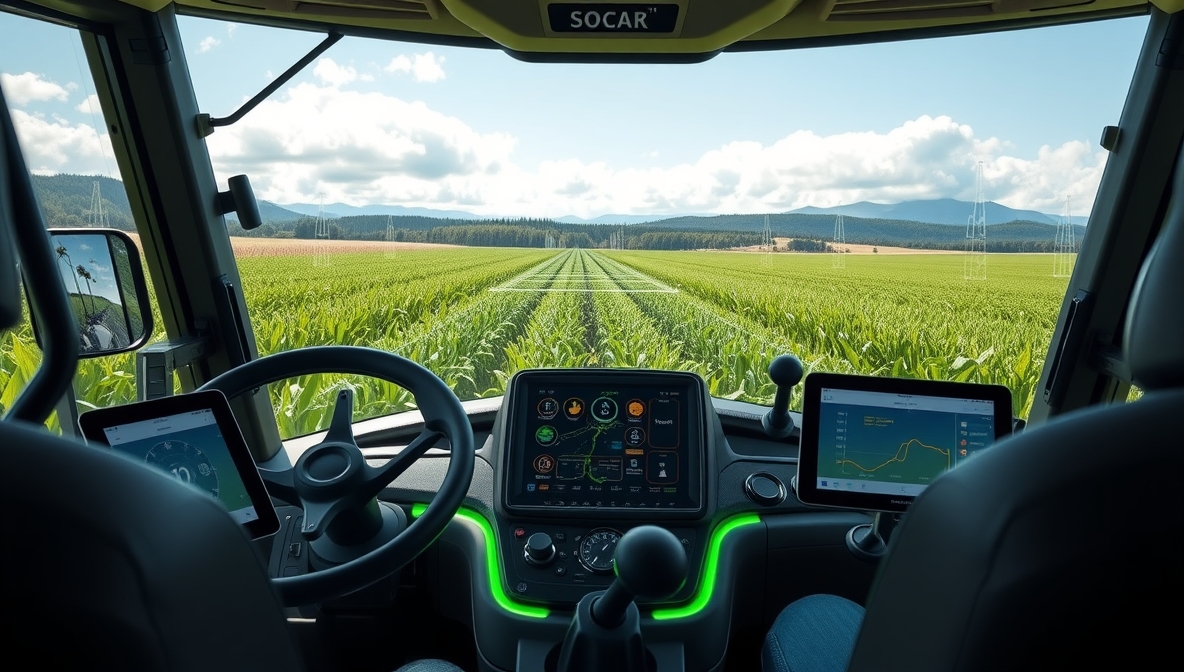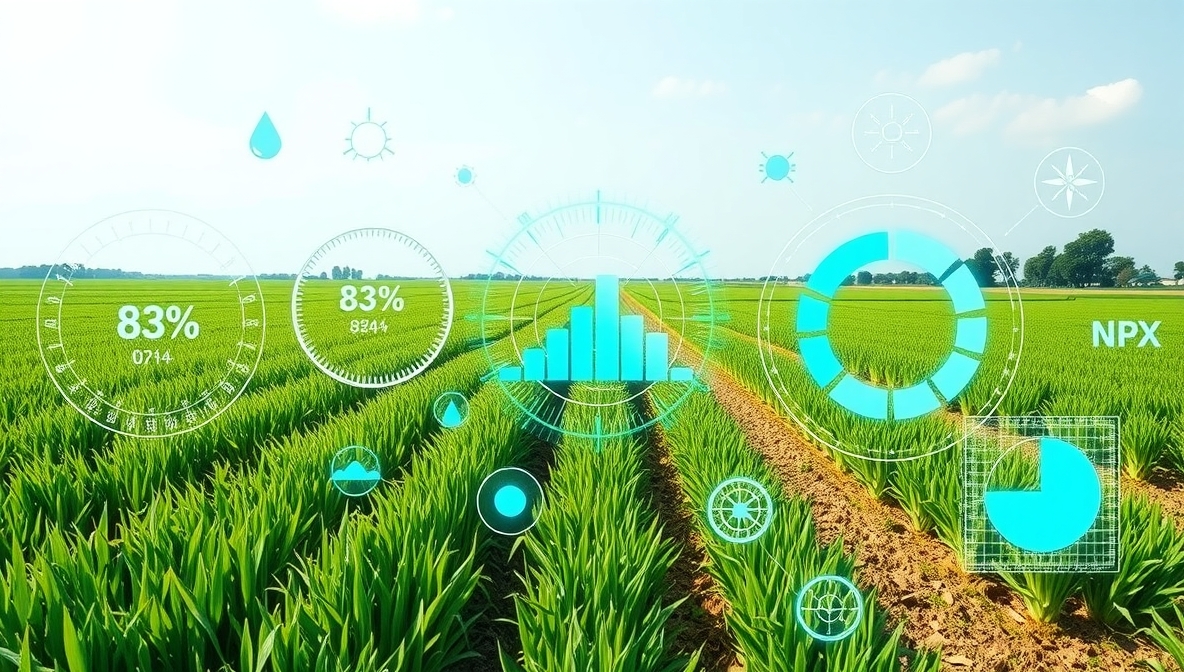
The world produces enough food today to feed roughly 7 billion people on the planet. Still, as the population is expected to expand by another 2 billion people in 2050, it’s estimated that global crop production will need to increase by another 60% to feed everyone1.
Today, problems such as food waste, labor shortage, and climate change already pose significant hurdles that challenge meeting this demand. Waste from plant disease and pest infestation is roughly 20% to 40% of global food production annually, contributing to $290 billion each year2.
A global assessment of the planet’s land resources found that a quarter of the land is already highly degraded, and 8% has moderate degradation because of climate change3. Water consumption will become a critical issue for farmers as they must be mindful of this diminishing resource while continuing to produce nutritious food to feed a growing population.
To offset some of these challenges, the agriculture industry is turning to innovation in artificial intelligence (AI) and the internet of things (IoT). The use of AI can help farmers become data-driven and ease some of the physical demands of farming, save money, and produce larger, high-quality yields, maximizing land and resources efficiently.
The Market Share of AI in Agriculture
87% of agricultural businesses in the US were reported to be using AI technology at the end of 2021, a 73% adoption increase over the previous year4, giving validity to the use of this emerging technology as a vital tool for production and sustainability.
Mordor Intelligence reports that the AI market in agriculture is valued at $1.7 billion for 2023 and is expected to reach $4.7 billion by 2028, a CAGR of 22.55%5.
Popular adoption of this technology can be credited to the intuitive and data-driven applications that give farmers insights to make effective decisions even if they are not experts on things like plant disease or soil quality.
Real-World Agtech Examples
In the US alone, nearly 200 AI-based agricultural startups have emerged to solve production problems6. Here are just a few examples of companies utilizing AI technology to help farmers:
FarmVibes.AI
A data-based platform from Microsoft, FarmerVibes.AI8 extracts data from multiple sources, such as sensors, satellites, and aerial imagery, to piece together a coherent picture of farmland. Farmers can use this data to identify the long-term sustainability of soil and water in an area — such as land with topsoil erosion or waterways that retain water from floods or rainfall. This allows the farmers to plant and utilize land in a way that gives them the best return in production and resources.
Dimitra
This global Agtech company9 is on a mission to help smallholder farmers who produce crops on a limited scale. Dimitra partners with governments, agencies, NGOs, and for-profit organizations to make its “Connected Farmer” platform available to developing nations for free. Built on blockchain technology, the app uses mobile technology, IoT devices, drone and satellite imagery, advanced farming research, and genomics. Their data-driven approach helps farmers reduce expenses, mitigate risks, and increase yield from their crops.
John Deere
This well-known name in farming10 leverages satellite imagery to monitor crops more effectively, assess field conditions, and improve resource allocation for better crop yields. Using space-based data, Deere’s solutions can measure variations in plant health, nutrient levels, and soil moisture, helping farmers make data-driven decisions around crop protection, fertilization, and irrigation.
Moreover, the company launched its first fully autonomous tractor, a product of 20 years of AI development. Farmers can operate the vehicle remotely by tablet, and it can prepare up to 325 acres in 24 hours, allowing farmers to shift time and resources to other tasks.

Concerns in AI-Assisted Farming
The advancement of AI in meeting the demands of the global food supply also raises important ethical questions.
Replacement of Workers
Innovators must balance technological progress with the welfare and livelihood of farming workers, many of whom are already vulnerable and dependent on low-skilled jobs. Ensuring a just transition for displaced workers, offering retraining programs, and addressing the socioeconomic inequalities that may arise from AI-driven automation are essential considerations.
Tech Learning Curves
Farmers — especially those in resource-strapped regions — must have equitable access to training and support to effectively harness these innovations. Failure to address this concern could exacerbate disparities in agricultural productivity and income, disadvantaging vulnerable farming communities.
Costly Investments
The high up-front costs of new technologies could exacerbate problems of exclusivity and inequality, putting an undue burden on small-scale and marginalized farmers who may struggle to afford such innovations.
The Promise of AI in Agriculture
The problems threatening the future of global food production are considerable. Integrating AI technologies can help by conserving water and fertilizer, increasing crop yields, preventing disease and pest infestations, and reducing food waste and greenhouse gas emissions through localization and improved supply chain efficiencies. By employing AI solutions with ethical considerations and equity in mind, startups, and established companies can expand access to these technologies to small farmers and developing nations, helping to meet the growing global demand for nourishment.
How Ambiq is Contributing
Collecting data from a variety of sources such as a smart sensor that analyzes data or acts as a connection point for other IoT devices will require reliable inferencing power that doesn’t drain battery life. Ambiq ultra-low power Sub-threshold Power Optimization Technology (SPOT ®) platform and variety of systems-on-chip (SoCs), are a proven solution for sensors and edge devices that need to do more while consuming less. They are at the core of AI capable lithium battery powered devices that can go weeks, months, or even years on a single charge.
References
1 Is There Enough Food for the Future? | 2023
2 Researchers Helping Protect Crops From Pests | National Institute of Food and Agriculture (usda.gov) | February 6, 2023
3 Land degradation and water shortages threaten global food production – UN | UN News | November 28, 2011
4 87% of US agriculture businesses are currently using AI – AgriNews | December 6, 2021
5 AI Market Size & Share Analysis – Industry Research Report – Growth Trends (mordorintelligence.com) | 2023
6 How AI is Cropping Up in the Agriculture Industry | February 2, 2023
7 Fermata | AI Pest and Disease Detection for Agriculture | 2023
8 FarmVibes.AI – Microsoft Research | October 6, 2022
9 Dimitra | 2023
10 John Deere | 2023


